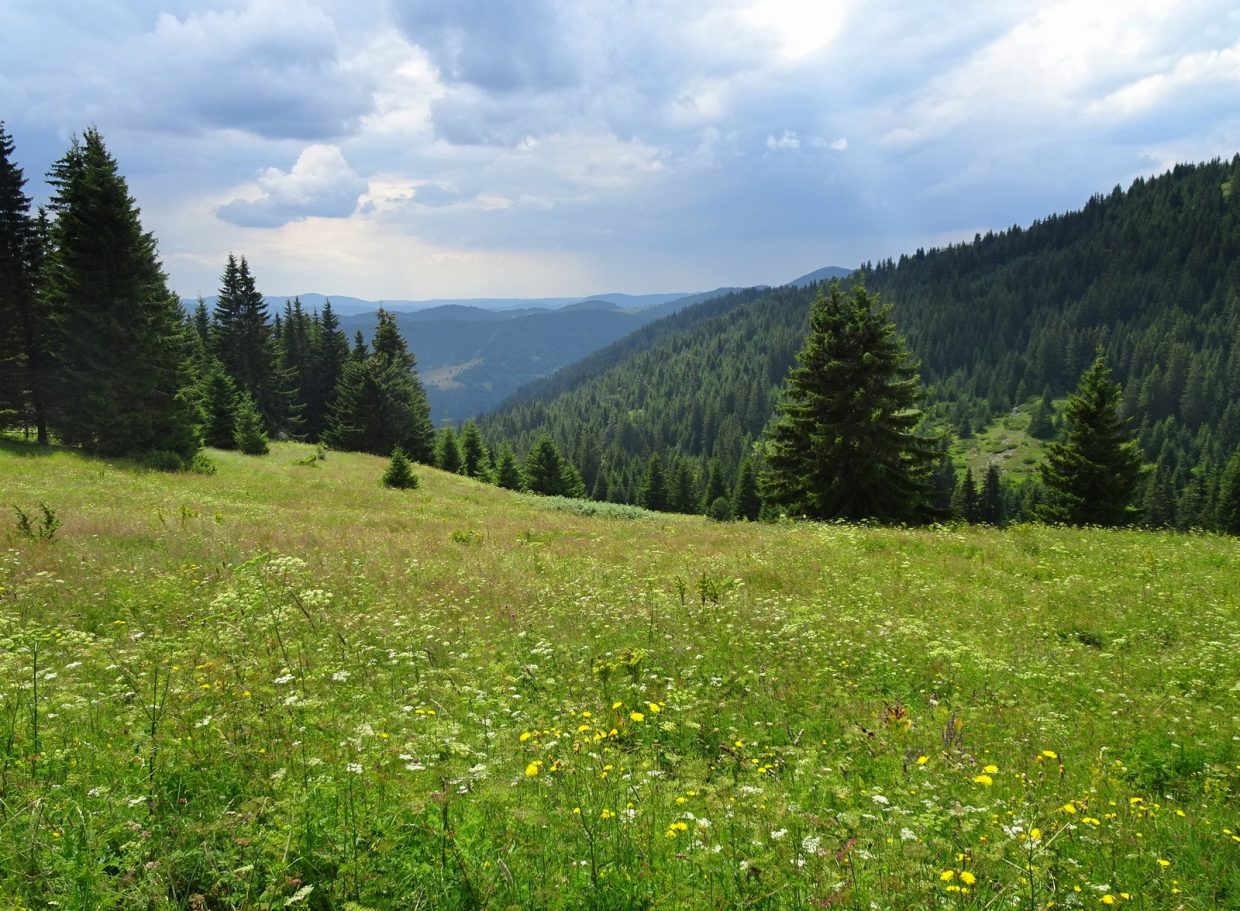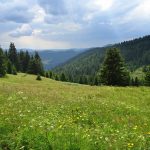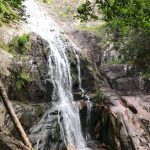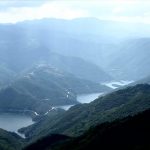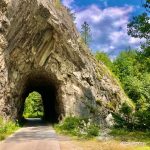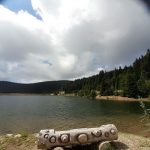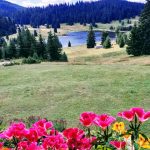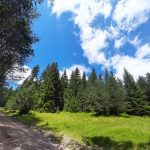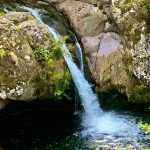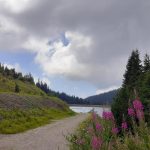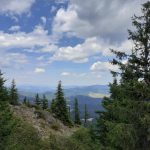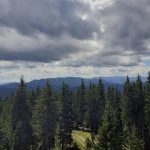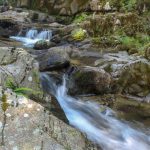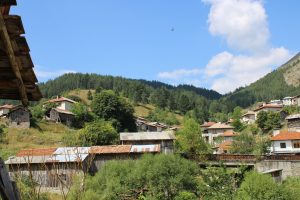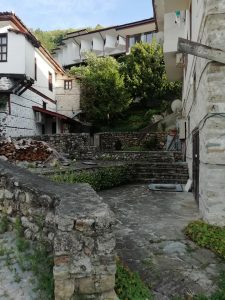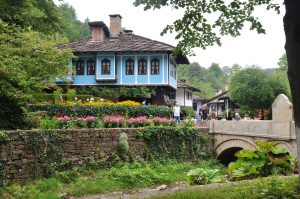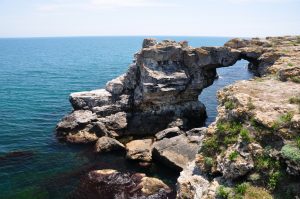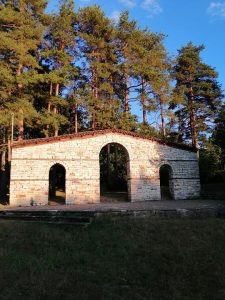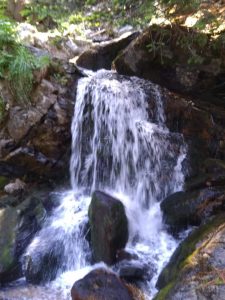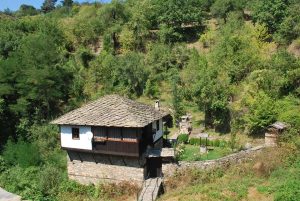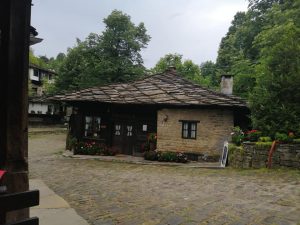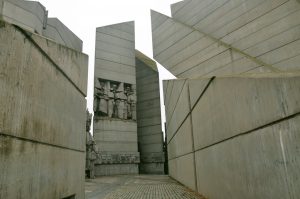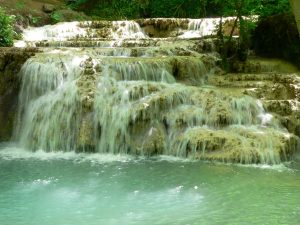The Rhodopes (/ˈrɒdəpiːz/; Bulgarian: Родопи, Rodopi; Greek: Ροδόπη, Rodopi; Turkish: Rodoplar) are a mountain range in Southeastern Europe, with over 83% of its area in southern Bulgaria and the remainder in Greece. Golyam Perelik is its highest peak at 2,191 meters (7,188 ft). The mountain range gives its name to the terrestrial ecoregion Rodope montane mixed forests that belongs in the temperate broadleaf and mixed forests biome and the Palearctic realm. The region is particularly notable for its karst areas with their deep river gorges, large caves and specific sculptured forms, such as the Trigrad Gorge.
A significant part of Bulgaria‘s hydropower resources are located in the western areas of the range. There are a number of hydro-cascades and dams used for electricity production, irrigation and as tourist destinations. In Greece there are also the HPPs of Thisavros and Platanovrysi. The Rhodopes have a rich cultural heritage including ancient Thracian sites such as Perperikon, Tatul and Belintash, and medieval castles, churches, monasteries and picturesque villages with traditional Bulgarian architecture from the 18th and 19th centuries.
Geography
In geomorphological terms, the Rhodopes are part of the Rila-Rhodope massif, which is the oldest landmass on the Balkan peninsula. The Rhodopes are spread over 14,735 square kilometers (5,689 sq mi), of which 12,233 square kilometers (4,723 sq mi) are on Bulgarian territory. They have the greatest extent of any single mountain range in Bulgaria. The mountains are about 240 kilometers (149 mi) long and about 100 to 120 kilometres (62 to 75 mi) wide, with an average altitude of 785 meters (2,575 ft). To the north the mountain slopes descend steeply towards the Upper Thracian Plain. To the west, the Rhodopes reach the Avram saddle, Yundola and the valley of the Mesta River. To the south and east they extend to the coastal plains of Greek Thrace. The Rhodopes are a complex system of ridges and deep river valleys.
Fifteen reserves have been established in the region, some of which are under UNESCO protection. The mountains are famous for the largest coniferous woods in the Balkans, their mild relief and the lush vegetation in the western parts as well as the abundance of birds of prey in the eastern areas.
Eastern Rhodopes
The Eastern Rhodopes are spread over a territory of about 34% of the mountains’ area in Bulgaria, constituting a much lower part.
The large artificial dams Kardzhali and Studen Kladenets are located in this part of the mountains. The region is rich in thermal mineral springs. The waters around Dzhebel have national reputation for healing various diseases. Belite Brezi is an important healing centre for respiratory and other ailments.
Major cities in the area are Haskovo and Kardzhali, as well as the smaller Momchilgrad, Krumovgrad, Zlatograd and Kirkovo. The Eastern Rhodopes, being significantly lower, are also more populated than the western part.
Almost every species of the European birds of prey nest in the rocks and forests of the Eastern Rhodopes including the rare black vulture and Egyptian vulture.
Southern (Greek) Rhodopes
The Southern Rhodopes are the part of the mountain range that is located in Greece. The Rhodope regional unit in the northern part of the country is named after the region. This area includes the Rodopi Mountain Range National Park.
Eastern imperial eagle
The Southern Rhodopes are characterized by numerous peaks of relatively low altitude. Their highest peak is Delimposka (1.953) in the mountain of Frakto, near the Greek-Bulgarian border. Nowadays the Southern Rhodopes is an area almost deserted. After World War II and the Greek Civil War most villages depopulated permanently and their inhabitants never returned. Even the Sarakatsani stockbreeders abandoned the difficult life of the Rhodopes. The depopulation of the region, that has not been grazed for more than 50 years, combined with high rainfall and its geographical location, has contributed to the creation and maintenance of a biological paradise. There grow coniferous trees, such as the Norway Spruce and the Silver Birch, that cannot be found elsewhere in Greece.
In the forest of Frakto there are 300-year-old trees, more than 50 metres high, and the endangered wild goat.
In the eastern part of the region there is the well known nature reserve of Dadia Forest, an ideal habitat for birds of prey, with 36 of the 38 species of birds of prey of Europe, like the rare Eastern imperial eagle and Lesser spotted eagle.
source: en.wikipedia.org
